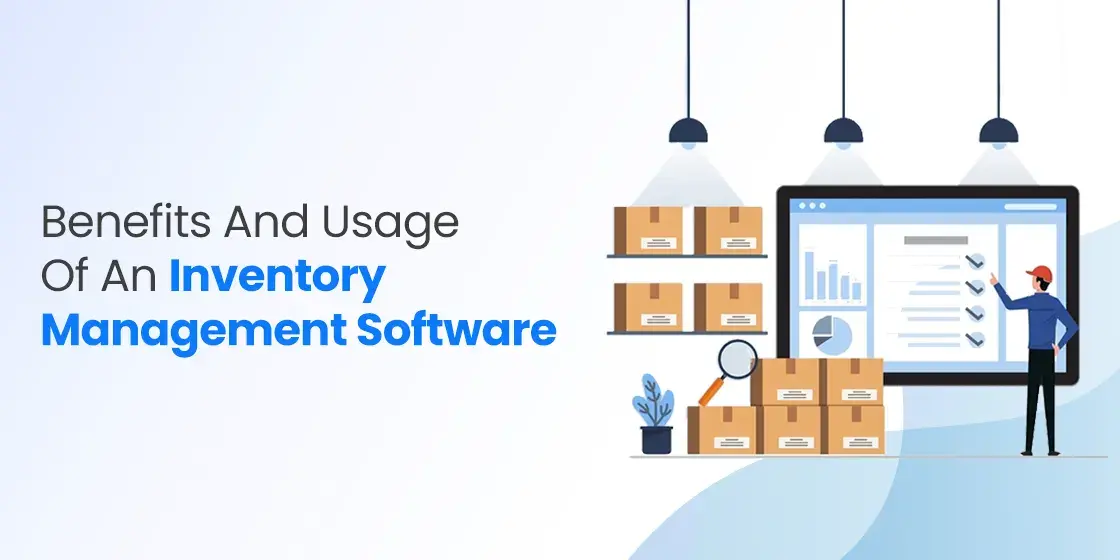Table of Content
Discover the Ins and Outs of Software Customization and Its Importance Today
In today’s rapidly evolving digital landscape, one-size-fits-all software solutions simply don’t cut it anymore. Software customization has emerged as a critical strategy for businesses seeking competitive advantages through technology that perfectly aligns with their unique processes, requirements, and goals. Unlike off-the-shelf software that forces companies to adapt their workflows to generic systems, customized solutions are built specifically to enhance operational efficiency and drive business growth.
The global custom software development market reached $35.42 billion in 2023 and continues growing at an impressive 22.5% annually, with projections indicating it will exceed $283 billion by 2028. This explosive growth reflects businesses’ increasing recognition that investing in tailored software solutions delivers substantial long-term benefits, including 25-50% increases in process efficiency and significant competitive advantages that generic software simply cannot provide.
Let’s take a look at the topic in detail, and discover why custom software development services today are so popular in the current development industry. Let’s begin.
Understanding Software Customization vs Configuration

Before diving into the benefits and implementation strategies, it’s crucial to understand the fundamental difference between software customization and configuration, as these terms are often confused but represent distinctly different approaches to adapting software solutions.
The distinction matters significantly because customization requires ongoing technical expertise, can complicate software updates, and typically involves higher costs and longer implementation timelines. However, when business requirements cannot be met through configuration alone, customization becomes essential for achieving competitive advantages and operational efficiency that would otherwise be impossible.
Software Customization
This involves modifying or creating new code to add functionality that doesn’t exist in the base software. This process requires programming expertise and typically results in fundamental changes to the software’s source code. Customization allows businesses to create entirely new features into their software product ideas, integrate with specific third-party systems, or modify core functionality to match unique business processes that cannot be accommodated through standard settings.
Software Configuration
It refers to adjusting existing settings, parameters, and options that are built natively into the software without requiring any coding. This might include rearranging fields on forms, setting up workflows using predefined rules, customizing reports from available data, or adjusting user permissions. Configuration utilizes the software’s existing capabilities to better align with business needs while staying within the bounds of the original system architecture.
Key Benefits of Software Customization
The decision to invest in software customization delivers multiple strategic advantages that can transform how businesses operate and compete in their markets. These benefits extend far beyond simple convenience to create measurable improvements in efficiency, productivity, and bottom-line results.
Enhanced Operational Efficiency and Productivity
Custom software solutions can automate complex business processes that generic software cannot handle, often resulting in 25-50% increases in operational efficiency. Unlike off-the-shelf solutions that require manual workarounds for unique processes, customized software streamlines workflows by eliminating unnecessary steps and automating repetitive tasks. Employees save an average of 10-15 hours weekly when routine tasks are automated through custom software solutions.
Perfect Alignment with Business Processes
Rather than forcing your business to adapt to software limitations, customization allows the software to adapt to your proven business processes. This alignment eliminates the need for expensive process changes and ensures that your competitive advantages remain intact. Custom software integrates seamlessly with existing systems and can evolve alongside changing business requirements, providing the flexibility that growing companies need.
Competitive Advantage Through Unique Functionality
Software customization enables businesses to implement features and capabilities that competitors using standard software cannot access. These unique functionalities can become significant differentiators in the marketplace, allowing companies to offer superior customer experiences, more efficient operations, or innovative services that set them apart from competitors who rely on generic solutions.
Types and Applications of Software Customization
Software customization encompasses various approaches and applications, from basic to enterprise software development, each designed to address specific business needs and technical requirements. Understanding these different types helps organizations make informed decisions about which customization strategies best serve their objectives.
- User Interface and Experience Customization: This type focuses on modifying how users interact with software, including custom dashboards, personalized navigation, role-based interfaces, and branded user experiences. UI/UX customization enhances user adoption and productivity by creating intuitive interfaces that match how employees actually work.
- Workflow and Process Automation: Custom workflow solutions automate complex business processes that span multiple departments or systems. These customizations eliminate manual handoffs and reduce errors while ensuring consistent execution of critical business processes.
- Integration and Data Management Customization: Many businesses require custom integrations between different software systems for seamless data flow unique data entry. Custom APIs, data transformation tools, and autosync processes ensure that information flows efficiently while maintaining data accuracy and consistency.
Implementation Strategies and Best Practices

Successful software customization requires careful planning, clear objectives, and strategic implementation approaches that minimize risks while maximizing benefits. Following established best practices helps ensure projects stay on budget, meet deadlines, and deliver expected results.
Requirements Analysis and Planning
The foundation of successful customization begins with thorough analysis of business requirements, existing systems, and future growth plans. This phase should involve stakeholders from all affected departments to ensure that customizations address real business needs rather than perceived wants. Clear documentation of requirements, success metrics, and acceptance criteria helps guide development and measure project success.
Phased Implementation Approach
Rather than attempting to customize everything at once, successful projects typically follow a phased approach that delivers value incrementally. This strategy allows businesses to realize benefits quickly while minimizing disruption to ongoing operations. Each phase should focus on high-impact customizations that deliver measurable improvements before moving to more complex modifications.
Quality Assurance and Testing
Custom software requires comprehensive testing to ensure reliability, security, and performance. Software quality management includes unit testing of individual components, integration testing to verify system compatibility, user acceptance testing to confirm that customizations meet business requirements, and performance testing to ensure the system can handle expected usage volumes. Proper testing prevents costly issues after deployment and ensures that customizations deliver expected benefits.
Technology Trends Shaping Software Customization
The software customization landscape continues evolving rapidly, driven by emerging technologies and changing business needs. Understanding these trends helps organizations make informed decisions about future-proofing their custom software investments.
- AI and Machine Learning Integration: Artificial intelligence capabilities are increasingly being integrated into custom software solutions to provide predictive analytics, automated decision-making, intelligent data processing, and personalized user experiences. The AI market, valued at $196 billion in 2023, is projected to reach $1.8 trillion by 2030, making AI integration a critical consideration for custom software projects.
- Low-Code and No-Code Platforms: These platforms enable businesses to create customizations with minimal traditional coding, reducing development time and costs while allowing business users to make certain modifications without technical expertise. Low-code platforms are particularly valuable for rapid prototyping and iterative development of custom solutions.
- Cloud-Native Architecture and Microservices: Modern custom software increasingly utilizes cloud-native architecture and microservices approaches that provide better scalability, flexibility, and maintenance advantages. This architecture allows businesses to scale individual components as needed and integrate with cloud services more effectively.
Security and Compliance in Software Customization
Custom software security requires careful attention to both technical implementation and regulatory compliance, particularly as cybersecurity threats continue evolving and data protection regulations become more stringent.
Built-in Security Measures
Custom software provides opportunities to implement security measures specifically designed for your business needs and threat profile. This includes role-based access controls tailored to your organizational structure, encryption methods appropriate for your data types, audit trails that meet your compliance requirements, and integration with existing security infrastructure. Custom solutions can address specific vulnerabilities that generic software might not adequately protect against.
Compliance and Regulatory Considerations
Businesses operating in regulated industries can build compliance requirements directly into custom software, ensuring that regulatory obligations are automatically met through system design rather than manual processes. This proactive approach reduces compliance risks and often simplifies audit processes by providing built-in documentation and reporting capabilities.
Ongoing Security Maintenance
Custom software requires ongoing security maintenance including regular security assessments, timely application of security patches, monitoring for new vulnerabilities, and updates to address evolving threats. Establishing clear security maintenance protocols helps ensure that custom solutions remain secure throughout their operational lifecycle.
Choosing Between Custom Development and Off-the-Shelf Solutions

The decision between custom software development and off-the-shelf solutions requires careful evaluation of multiple factors that vary significantly based on business size, industry, and specific requirements.
When Custom Software Makes Sense
Custom development typically provides the best value when businesses have unique processes that provide competitive advantages, require integration between multiple disparate systems, need specific functionality not available in existing software, or operate in regulated industries with strict compliance requirements. Companies experiencing rapid growth or planning significant expansion also benefit from custom solutions that can scale with their evolving needs.
Evaluating Vendor Capabilities
Selecting the right development partner is crucial for custom software success. Important evaluation criteria include proven experience in your industry or with similar projects, technical expertise in relevant technologies and platforms, clear communication processes and project management practices, and ongoing support and maintenance capabilities. Reference checks with previous clients provide valuable insights into vendor performance and reliability.
Risk Management and Mitigation
Custom software projects carry inherent risks that can be mitigated through proper planning and execution. Key risk management strategies include:
- establishing clear project scope and requirements documentation
- implementing phased development and testing approaches
- maintaining regular communication between stakeholders and development teams
- planning for ongoing maintenance and support needs
Proper risk management helps ensure that custom software projects deliver expected benefits on time and within budget.
Frequently Asked Questions
| What’s the difference between software customization and configuration? Software customization involves modifying or writing new code to add functionality that doesn’t exist in the base software, requiring programming expertise and resulting in fundamental changes to the source code. Configuration refers to adjusting existing settings, parameters, and options built into the software without coding. Customization creates new capabilities, while configuration optimizes existing features to better fit business needs. |
| How much does software customization typically cost? Basic custom software development typically ranges from $50,000 to $100,000, though costs vary significantly based on complexity, features, and scope. Factors affecting cost include the number of integrations required, complexity of business processes, level of customization needed, and project timeline. While initial costs are higher than off-the-shelf solutions, many businesses report ROI within 18-24 months through efficiency gains. |
| What are the main benefits of investing in software customization? Key benefits include 25-50% increases in operational efficiency, perfect alignment with existing business processes, competitive advantages through unique functionality, seamless integration with existing systems, and scalability that grows with your business. Custom software eliminates manual workarounds and can save employees 10-15 hours weekly through process automation. |
| When should a business choose custom software over off-the-shelf solutions? Custom software makes sense when businesses have unique processes that provide competitive advantages, require integration between multiple systems, need specific functionality not available in existing software, operate in regulated industries with strict compliance requirements, or are experiencing rapid growth requiring scalable solutions. If configuration of existing software can meet 80% of your needs, customization may not be necessary. |
| What are the risks associated with software customization and how can they be mitigated? Main risks include longer development timelines, higher initial costs, complexity with future updates, and dependence on technical expertise. These can be mitigated through thorough requirements analysis, phased implementation approaches, comprehensive testing protocols, clear project documentation, selecting experienced development partners, and planning for ongoing maintenance and support from the beginning of the project. |
Conclusion
Software customization represents a powerful strategy for businesses seeking to optimize operations, gain competitive advantages, and achieve sustainable growth through technology. While the initial investment and complexity may seem daunting, the long-term benefits of perfectly aligned software solutions far outweigh the costs for most organizations with unique requirements or competitive differentiation needs.
Success with software customization requires careful planning, realistic expectations, and commitment to ongoing maintenance and evolution. By understanding the differences between customization and configuration, evaluating options thoroughly, and working with experienced development partners, businesses can create software solutions that not only meet current needs but also provide the flexibility to adapt and grow with changing requirements.

Empower your digital journey with StruqtIO - Your dedicated partner for cutting-edge custom software development, innovation, and digital transformative solutions. Harness the power of technology to elevate your business and redefine your digital landscape today.


